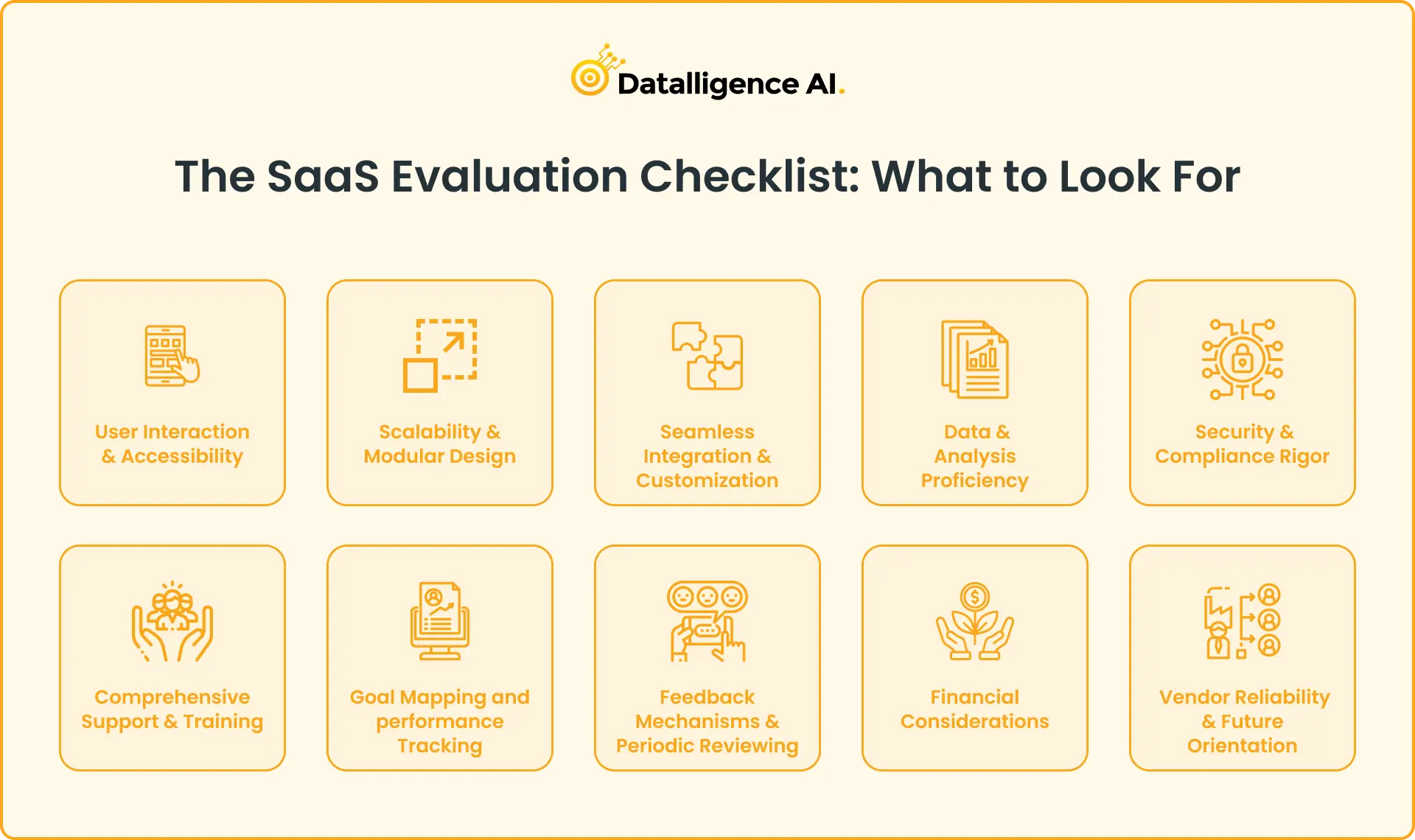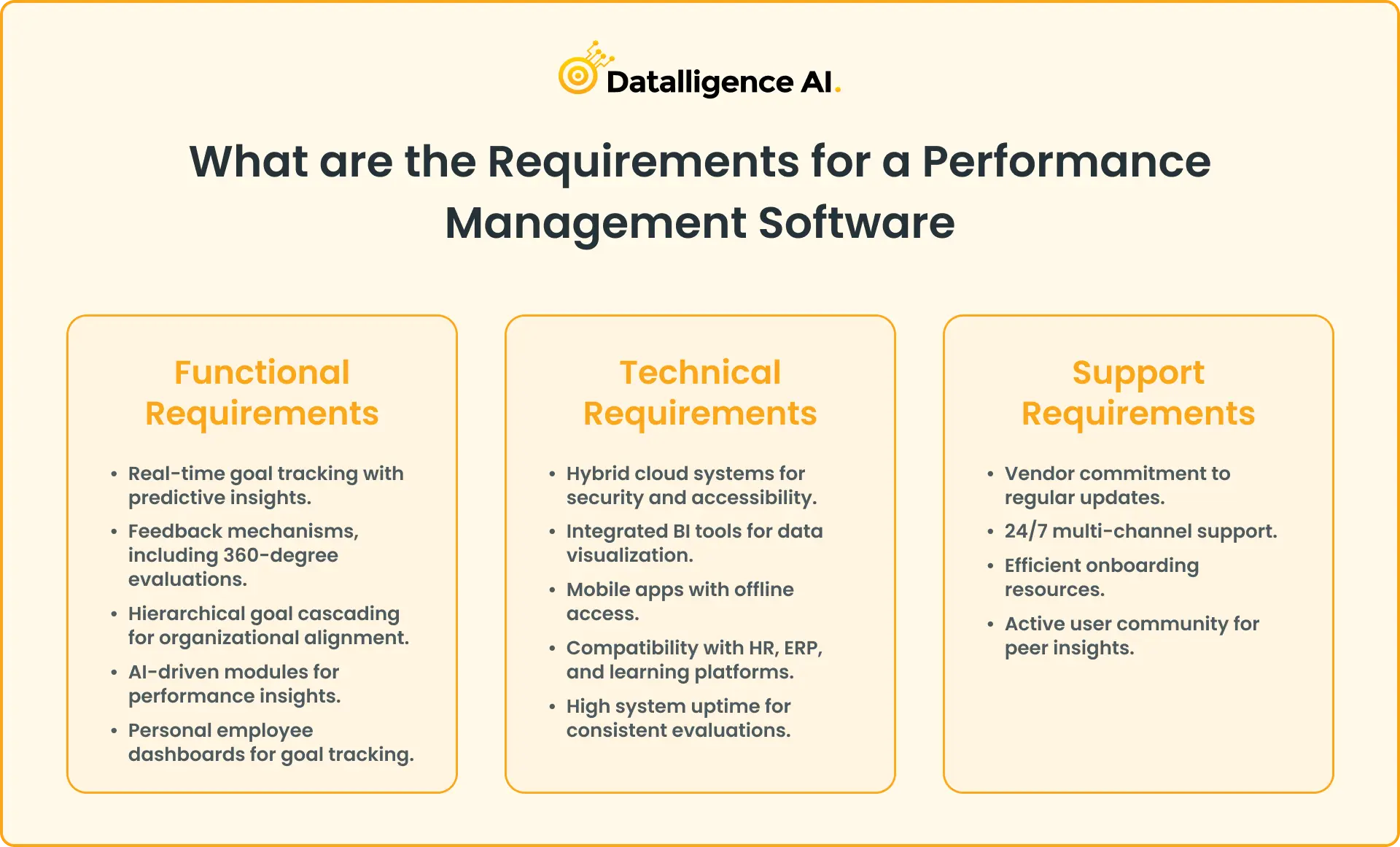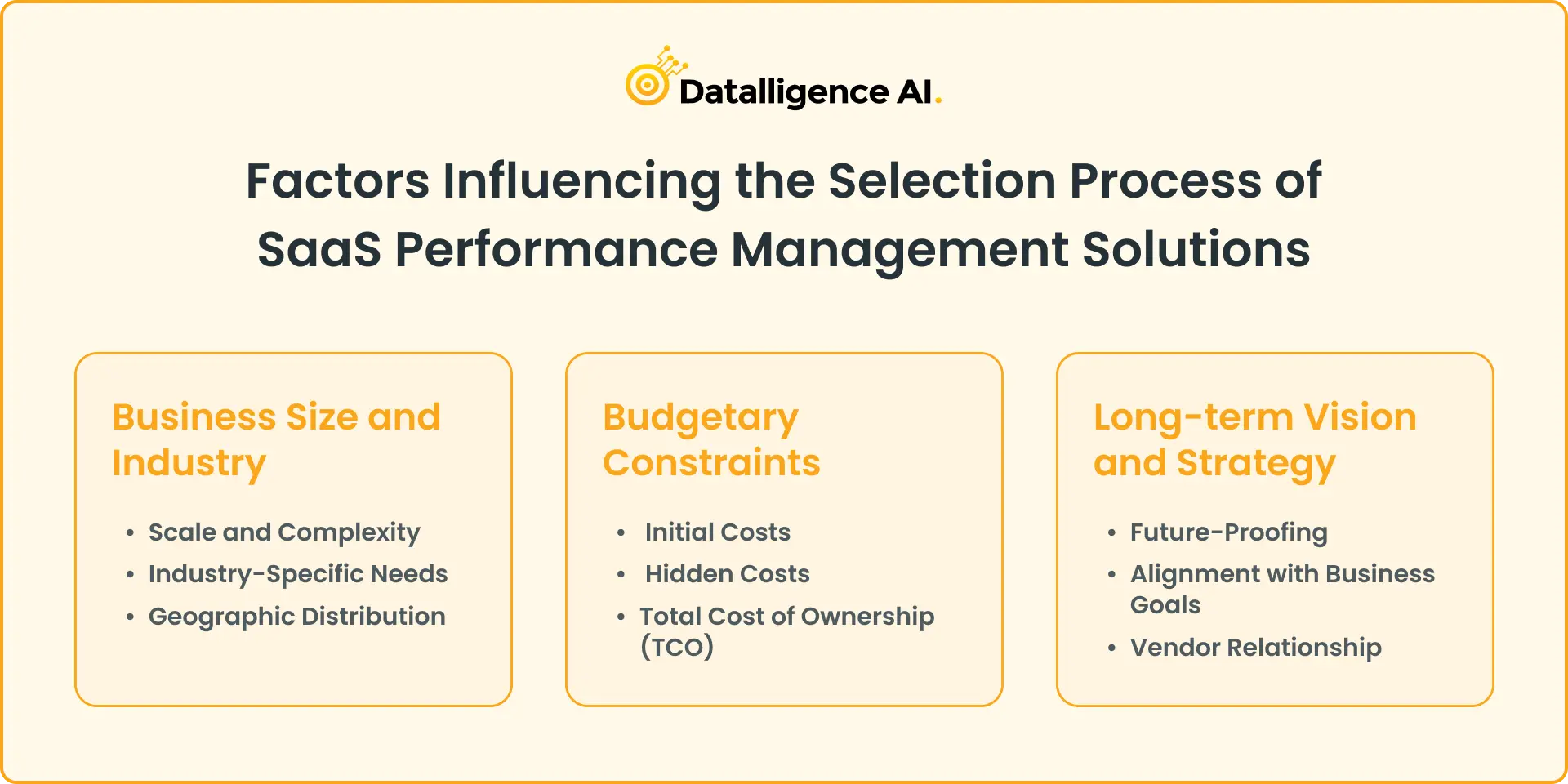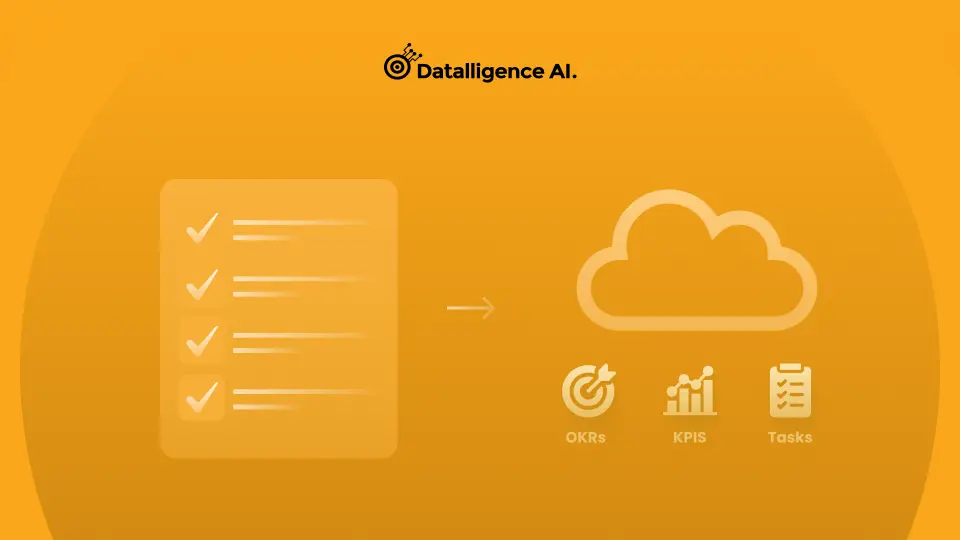Performance management has become a cornerstone for businesses seeking agility, scalability, and seamless operational functionality. As businesses flock towards SaaS solutions to manage their performance and ensure that the systems they implement align perfectly with their goals, it's essential to ensure that these software choices live up to expectations. This is where a SaaS evaluation checklist comes into play. Knowing the essential performance management system requirements ensures you get the most out of your investment, enabling your business to thrive and evolve in a rapidly changing digital landscape.
Table of Contents
What is SaaS Performance Management Solutions
SaaS Performance Management refers to the tools, strategies, and systems employed within a Software as a Service (SaaS) framework to optimize its performance and functionality. It encompasses the monitoring, measurement, and enhancement of various processes to ensure they align with and achieve the intended business objectives. Essentially, it's about ensuring that the SaaS solutions operate at their peak, delivering value to both the businesses that use them and their end-users.
For Example: Think of Salesforce, a widely known SaaS platform. Its performance management ensures that users can access real-time data, track sales leads, and manage customer relationships without any glitches, slowdowns, or system crashes. Proper SaaS performance management Solution ensures that as more enterprises and users jump onboard, the platform remains responsive and efficient, and meets the intended purpose of helping businesses drive sales and maintain customer relationships.
Key Points on SaaS Performance Management Software
- Focuses on optimizing software processes and functions.
- Involves continuous monitoring and regular system checks.
- Emphasizes user experience and system efficiency.
- Often incorporates real-time analytics for instant decision-making.
- Prioritizes scalability to grow with business needs.
- Emphasizes system integration capabilities for holistic business operation.
- Necessitates robust security measures to protect data and system integrity.
- Requires periodic updates to stay relevant to evolving technology and user needs.
What Should You Look for in a SaaS Evaluation Checklist?
Selecting the right SaaS Performance Management Solution is crucial for business efficiency and growth.
Here's a definitive list of essential criteria to guide your selection process:

- User Interaction & Accessibility
Ensuring user-friendliness is paramount for any SaaS solution. A design that's intuitive and clear can reduce onboarding time and improve user engagement.
- Intuitive layout and straightforward user journey.
- Compatibility across multiple devices including mobiles and tablets.
- Ability to define custom user roles with varying access and permissions.
- Scalability & Modular Design
As businesses grow, their software solutions should be able to accommodate this growth without becoming a bottleneck.
- Capability to support an increasing number of users as the organization grows.
- Flexibility in feature selection, allowing additions or removals as needed.
- Seamless Integration & Customization
Integration and customization capabilities ensure the software fits perfectly within the company's existing ecosystem.
- Effective connectivity with existing organizational tools or platforms.
- Adaptability of system processes to fit unique company workflows.
- Data & Analysis Proficiency
Making informed decisions requires the right data at the right time.
- Real-time data updating for instantaneous insights.
- Tools for deep data analysis, trend identification, and visualization.
- Security & Compliance Rigor
In the digital age, data security is more important than ever.
- Robust measures to ensure data integrity and confidentiality.
- Compliance with all relevant industry standards and regulations.
- Advanced user authentication methods, including multi-factor options.
- Comprehensive Support & Training
A good product also means good support and training resources.
- Assistance during the initial setup and implementation phase.
- Accessible support teams for post-deployment inquiries or issues.
- Goal Mapping and Performance Tracking
Efficient performance management systems allow for clear goal-setting and monitoring.
- Tools designed for establishing, monitoring, and revising performance targets.
- Systems that ensure individual KPIs are in sync with larger company objectives.
- Feedback Mechanisms & Periodic Reviewing
Feedback is vital for continuous improvement.
- Multiple methods for feedback collection, encompassing peer reviews and self-assessments.
- Capability to schedule systematic performance evaluations.
- Financial Considerations
Financial transparency ensures there are no unwelcome surprises.
- Clear and transparent pricing without hidden costs.
- A solid return on investment when evaluating the provided features against costs.
- Vendor Reliability & Future Orientation
Choosing a reliable vendor is just as important as choosing the right product.
- A commitment from the vendor to provide regular software updates and enhancements.
- Positive market reputation backed by customer testimonials and reviews.
What Are The Requirements for a Performance Management Software
A SaaS Performance Management System is crucial for businesses looking to optimize their cloud-based software solutions. To ensure robust, efficient, and seamless SaaS performance management Solution here are the fundamental requirements for such a system:

Factors Influencing the Selection Process of Performance Management Solutions
When it comes to selecting a SaaS Performance Management Solution, several considerations come into play. One size does not fit all, and businesses must make informed decisions based on various influencing factors. Let's delve deeper into three primary aspects: Business Size and Industry, Budgetary Constraints, and Long-term Vision and Strategy.

1. Business Size and Industry
- Scale and Complexity: Scale and Complexity: Larger firms need solutions with greater depth to handle intricate hierarchies and diverse teams, while SMEs might prefer simplicity.
- Industry-Specific Needs: Different sectors have unique requirements. For example, healthcare might prioritize data protection, while tech startups could value integrability..
- Geographic Distribution: Geographic Spread: Multi-region businesses should consider solutions accommodating various time zones, languages, and local compliances.
2. Budgetary Constraints
- Initial Costs: While feature-rich solutions may be attractive, they should align with the expected return on investment.
- Hidden Costs: Beyond the base price, be wary of additional costs like extra features or increased user counts.
- Total Cost of Ownership (TCO): Consider all costs, including training, implementation, and future upgrades.
3. Long-term Vision and Strategy
- Future-Proofing: Opt for solutions that can adapt to tech advancements and remain relevant over time
- Alignment with Business Goals: The tool should support the company's future objectives, be it expansion, diversification, or other aspirations.
- Vendor Relationship: Choose vendors known for regular updates, robust customer support, and clear product roadmaps.
Measuring the ROI of Your SaaS Performance Management Solution
To truly understand the value derived from a SaaS Performance Management Solution, it's essential to measure its Return on Investment (ROI). ROI not only quantifies the tangible benefits but also justifies the investment to stakeholders.
Here's a brief guide:
1. Key Metrics:
- User Adoption: Are employees actively using the system?
- Time Saved: Reduction in performance management tasks duration.
- Engagement: Any rise in employee participation?
- Training Costs: Expenses before vs. after system deployment.
- Performance Gains: Any improved KPIs or task completions?
2. Continuous Value:
- Review: Periodic checks on system efficacy.
- Feedback: Regular input from users.
- Updates: Stay updated with system enhancements.
- Training: Refresh user knowledge as needed.
To gauge the tool's value, consistently track core metrics and prioritize ongoing enhancement.
How Can Datalligence Help You?
Navigating the intricate world of SaaS Performance Management Solutions is made simpler with Datalligence. Meeting the benchmarks of our checklist, Datalligence offers a comprehensive solution from goal tracking to seamless integrations. It's not just about software; with Datalligence, you're investing in sustained business growth.
Talk to us and gain more insights into how we can further elevate your SaaS performance management Solution strategy. With the right tools and guidance, such as that offered by Datalligence, your journey to optimizing performance becomes clearer and more actionable.











